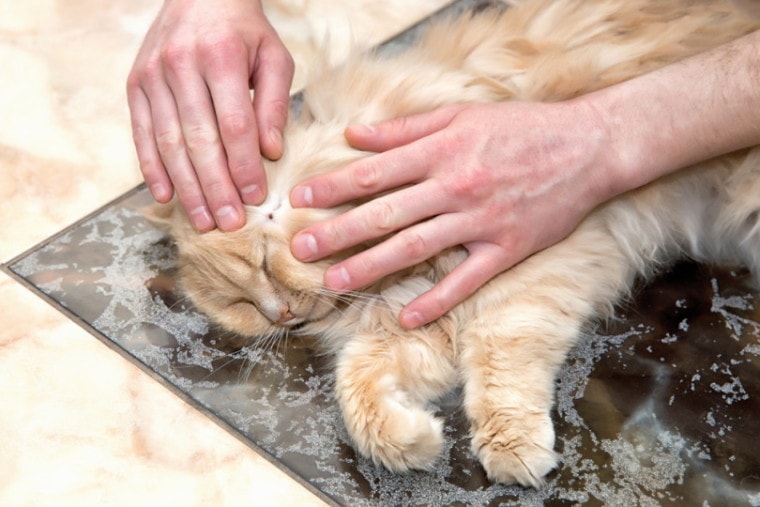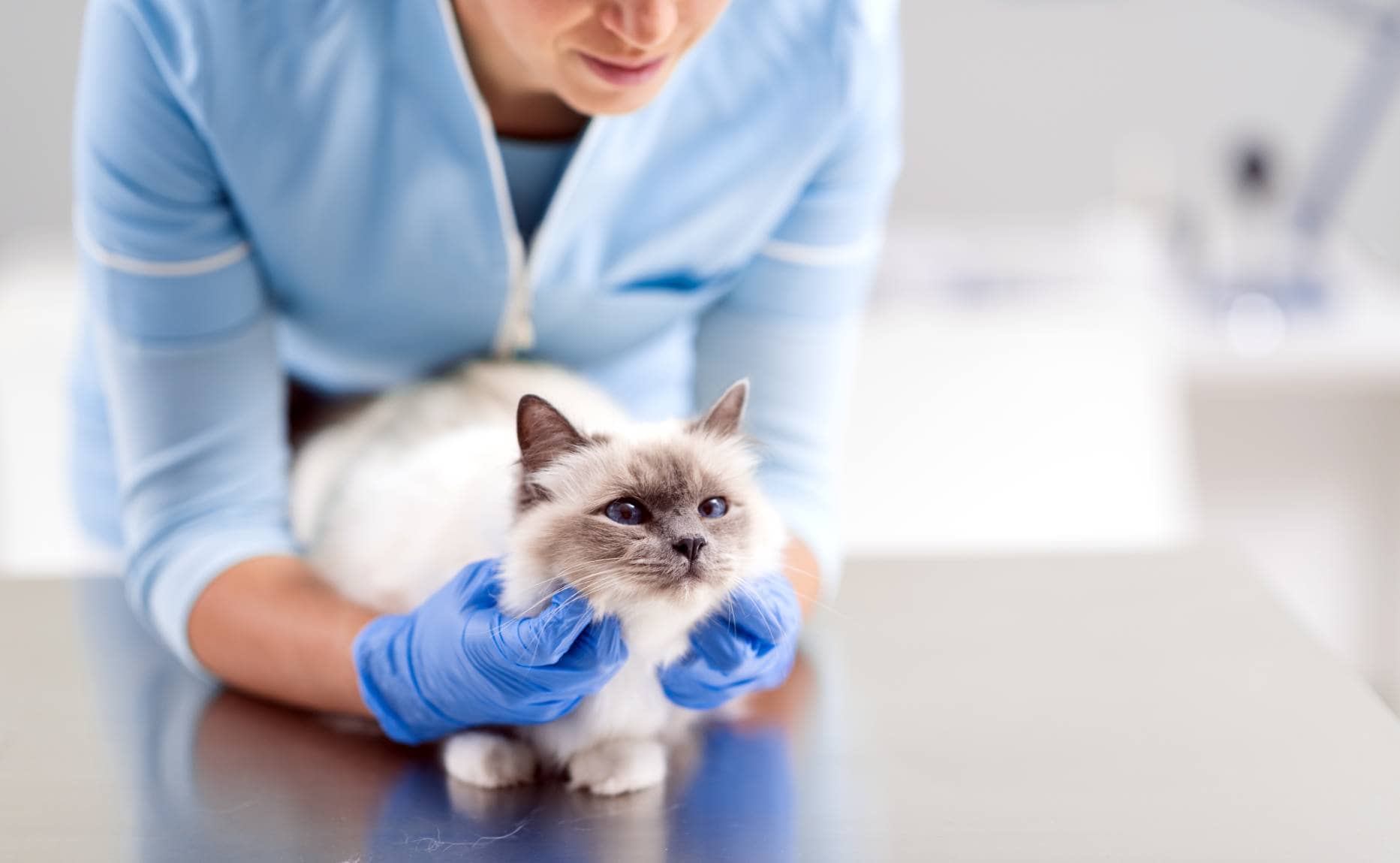
Lyme disease is an illness that is mainly transmitted by deer ticks in the United States. It can affect domestic and wild animals, as well as humans. It’s one of the most common tick-transmitted diseases in the world, so it’s important to know the signs of an infection and how it’s spread.
Fortunately for cat owners, this disease is uncommon in cats, and there have been only a few reports of cats actually developing signs of infection. However, it’s still a serious and potentially fatal disease, if left untreated. Even though Lyme disease is rarely seen in cats, they can still be infected. Since transmission to cats is possible, knowing what to do to prevent it from happening is the most effective way to keep your cat safe.
Let’s take a look at the signs of Lyme disease, the treatment for this illness, and what you can do to prevent it from infecting your cat.
How Is Lyme Disease Spread?

Lyme disease is caused by a spiral-shaped bacterium called Borrelia burgdorferi.1 Ticks do not carry Lyme disease itself. They can only carry — and spread — the bacteria that cause it. Not all ticks are infected with the bacteria, so if you find a tick on your cat, it doesn’t mean the cat was exposed to Lyme disease. A tick must feed on an animal or person already infected with the bacteria to become infected themselves.
When a tick selects a host, they grasp onto the skin using small barbs. Sometimes, they also secrete a glue-like substance to attach themselves.2 This is why it can be difficult to pull ticks off of the skin. Their saliva contains numbing agents so their hosts can’t feel the tick while it feeds, and they can stay attached for several days. If the host has infected blood, the ticks will absorb the bacteria. They then become infected and can transmit the infection to their next hosts through biting and feeding.
Immature ticks, called nymphs, are mainly responsible for transmission because they are smaller than adult ticks and more difficult to notice. The larger, adult ticks are easier to spot when they are attached to your animal’s skin, especially if they have light-colored, short fur. When adult ticks are spotted, they can be removed quickly. Once a tick is attached to the skin, the transmission of Borrelia burgdorferi takes place between 24–48 hours. Younger ticks have a better chance than adult ticks of going unnoticed on an animal for that long.
Signs of Lyme Disease in Cats

The majority of cats with Lyme disease never show any signs of the disease. Reports of actual clinical signs due to Lyme disease in cats are few and far between, and it’s believed to occur mostly in the laboratory setting. If you have found ticks on your cat, consult your veterinarian and stay on the lookout for signs, which can take up to 4 weeks to occur.
Since signs aren’t always present in an infected cat, so your vet may want to perform diagnostic tests, including blood tests, to determine if they have the disease. Signs of the disease cats may experience are believed to be similar to the ones seen in dogs. Lyme disease can also affect humans, and by spending time outdoors and having cats that may bring ticks indoors, you should be vigilant when it comes to this illness.
Lameness due to joint inflammation is one sign of Lyme disease. Animals can experience lameness in one leg that occurs for a few days and then disappears, only to return weeks later in a different leg. This “shifting-leg lameness” is a sign that your cat needs to be seen by a vet right away.
Infected animals can also experience dysfunction and inflammation of the kidneys, in more severe forms of the disease. That can lead to kidney failure and signs that include vomiting, weight loss, lack of appetite, increased thirst, and fluid buildup in their body tissues.
As mentioned before, most of these signs are extrapolated from Lyme disease in dogs, as clinical illness is actually rarely seen in cats, and reports of heart disease are one of the very few that are available in literature. Still, it’s important to understand that cats can get infected with Lyme disease, and ticks that feed off of them may transfer the bacteria to dogs or humans. It’s just rare that cats actually get sick themselves.
Diagnosing Lyme Disease in Cats

If you suspect that your cat has Lyme disease, your vet will want to go over your cat’s history with you. That will include your cat’s medical history, when you first noticed the signs, how often your cat goes outside, the areas that they frequent outdoors, and anything else that may have led to the infection. They will also inspect the tick-bite site to see if pieces of the tick remain in the skin and how the wound appears to be healing if the tick was attached only recently.
A blood test is the most common way of diagnosing Lyme disease, although other laboratory tests may be performed. X-rays and joint sampling may sometimes be used to see the severity of the joint inflammation.
If your cat has been positively diagnosed with Lyme disease, your vet will discuss a treatment plan with you.
Treatment of Lyme Disease in Cats
Usually, outpatient treatment is effective for treating cats with Lyme disease. When the disease is caught early, many cats respond quickly to the medication. Antibiotics are prescribed and the cat will remain on them for 4 weeks. If necessary, pain medication may also be prescribed. Do not give your cat anything unless it’s been approved by your veterinarian. If the first round of antibiotics doesn’t work to treat the disease, a second round may be added.
Clinical signs of the disease may clear up completely, but in some cases, they don’t totally resolve. Even after a full course of treatment, long-lasting joint pain and inflammation can remain.
If the disease is left untreated in cats for a prolonged period, it may take much longer to treat. It may also take longer for your cat to recover. Untreated Lyme disease can cause irreversible damage to the kidneys and joints, mainly in the limbs.
Preventing Lyme Disease in Cats

While a vaccine exists to prevent Lyme disease in dogs, one does not exist for cats. That means you’ll have to be diligent about protecting your cat from this disease yourself.
The easiest prevention is not allowing your cat to explore outdoors in tick-infested areas. However, ticks can find their way to cats that are indoors, so this method isn’t foolproof. Tick control is the key to preventing Lyme disease infections.
Perform regular checks of your cat’s skin, especially during grooming and whenever your cat returns from being outdoors. Check yourself when you return, as ticks can be brought into the house on your skin or clothing.
Using a grooming tool and carefully examining the skin for ticks can be helpful when brushing your cat. Always wear gloves when searching for ticks, and remove any ticks you find by hand, being careful to remove every part of the tick from your cat’s skin. You can use tweezers to help you pry the ticks off of your cat. If you do find ticks, dispose of them in alcohol.
Tick repellents, such as vet-approved spot-ons and tablets, should be used to help keep your cat safe, but always check with your veterinarian to be sure they are safe to use. Topical preventative treatments should always be used only according to the directions.

Final Thoughts
While signs of Lyme disease are very uncommon in cats, it can still affect them if they are bitten by infected ticks. Also keep in mind that the same tick may bite you too and transfer the disease, so always be careful when handling ticks and examine yourself as well as your cat on a daily basis if you are in tick-infested areas. If left untreated, Lyme disease can cause irreversible damage and can potentially be fatal. Take your cat to the vet immediately if you suspect that they’ve been infected.
Preventing Lyme disease in your cat includes checking them regularly for ticks, using regular vet-approved tick repellents, and staying vigilant about the areas in which your cat roams outdoors.
Be aware of the signs of Lyme disease. With early detection, Lyme disease can be treated and your cat can make a full recovery.
Featured Image Credit: anastasya perfenyuk, Shutterstock








